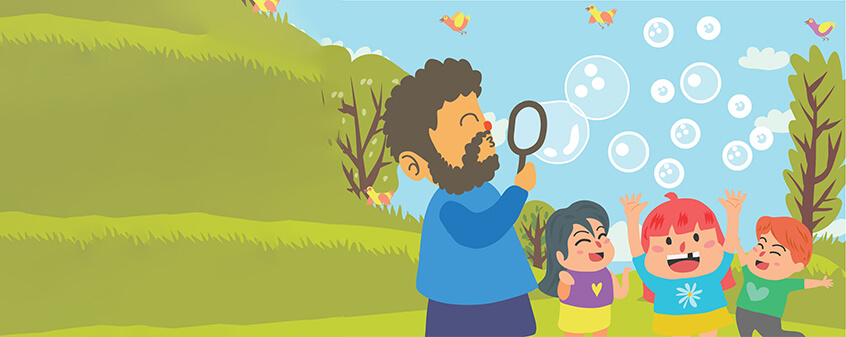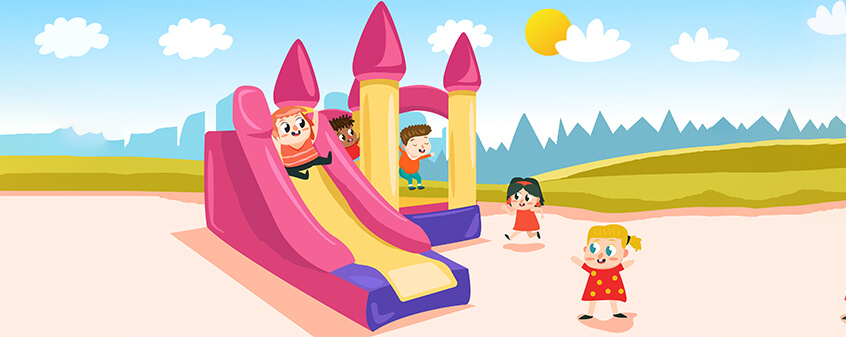Left brainers vs right brainers
My brothers, one a left brainer and the other a right brainer, motivated me to study more about this concept and I will share with you what I have learnt about how the two parts of the brain work independently and inter-dependently. Knowing this will help us understand how our kids are wired and what we need to do for them to be successful in the future.
Left brainers are analytical, systematic, logical, and sequential. They are good at math and science. They love to stay indoors and handle systems. Left brainers are generally better at written communication but not too good at marketing themselves or talking about themselves. Since they are process oriented, they are not very adept at marking out their own skills and talents. They also find it difficult to quantify their contributions. They usually prefer their own company.
Right brainers are creative, intuitive, and emotional. They are good speakers and can organize events. They enjoy writing and art. Right brainers love to talk to people and work in groups. A creative person looks for a lot of self acceptance from what he does. From this self acceptance arises the concept of self esteem. As they are creative people they have high self-esteem issues when it comes to asking for help from others. It’s difficult for them to maintain inventories of their achievements. Bestselling author and journalist Daniel Pink in his book Why Right Brainers Will Rule the World observes that the 21st century is witnessing a shift in what is required of people at the fastest rate. Calculating and tabulating numbers with speed and accuracy was once a prized skill. However, every kid today knows that a calculator or an excel worksheet can do the same thing faster and definitely more accurately. The Internet has made the globe flat. People and places are no longer divided by time or defined by space. Better lifestyles, growing affluence, and changing socio-cultural and economic patterns are causing unprecedented challenges in human evolution and development. So parenting and teaching styles and techniques need to match the demands of the ever evolving society. Pink anoints this current trend as the Conceptual Age and its movers and shakers as the creative thinkers who can empathize with others standpoints and solve problems on the spot. He justifies this change in these words: ‘…In short, we’ve progressed from a society of farmers to a society of factory workers to a society of knowledge workers. And now we’re progressing yet again—to a society of creators and empathisers, of pattern recognizers and meaning makers.’1
How do I know if I am a right brainer?
You can do a small but interesting test to check if you are a right brainer or a left brainer. Go to http://www.perthnow.com.au/fun-games/left-brain-vs-right-brain/story-e6frg46u-1111114517613
The page shows a lady spinning on her foot. Look at the image carefully. If you see her spinning clockwise then you are a right brainer. If you see her spinning anticlockwise then you are a left brainer. You will also notice that after sometime she begins to spin in the opposite direction of what you have been seeing. This is because the other side of your brain has been activated by that time. Soon you will be able to decide which side she can spin. If you think clockwise, she will spin clockwise. Or try the experiment on page (xxx). Look at the chart and try reading the colour of the word. If you are easily able to read the colours, your right brain is more powerful than the left brain.
The chart produces a conflict between the right brain and the left. The left brain being used to sequencing and logic reads the spelling while the right brain reads the colour. Most of us though went to schools with a focus on left brain programming so even those of us like me who are more right brain dominant will find it difficult to read the colour initially.
Our education system is based on a strict examination and commensurate grading systems that lays more emphasis on learning and remembering volumes of facts and figures encourage left brain activity and stunt right brain creativity. Testing of left brain activity seems to be the main focus of schools and their examination systems. All students are made to think alike and standardized answers are given en masse in classrooms. They are tested in how well they can retain these answers. It’s not a surprise that Einstein once remarked: ‘The only thing that interferes with my learning is my education’ This is why left brain dominated children do well in school, as they are more likely to respond to formal learning. They exhibit greater responsibility, are quite content studying by themselves, and have greater concentration. The right brain child may not be an academically inclined in the classroom. They like to work in groups, usually restless, they prefer to be free rather than be tied up in a formal classroom. If right brain skills are not exercised at all, there is a possibility that children may not develop sufficiently. A well built curriculum, which subscribes to the development of both the sides of the brain, is thus the requirement of the day. Activities that encourage various creative skills hone the right brain thinking process to provide emotional and visual vignettes and freely associated images. Kids then associate these images with their thoughts and find patterns to understand problems and gaps. Too much logical dominance in any creative process helps the left brain assert itself and dispense most creative ideas as irrational and unpractical. However, I like to believe that it is important to develop practical means to train both the hemispheres sufficiently so
that their average intelligence and creativity can be raised to a much higher level. If today, we as parents, educators, and entors collectively take up this task, our children will grow up to be musicians, scholars, scientists, and researchers who will enrich our cultural heritage. One’s dominant brain type has a very significant effect on one’s study skills, homework habits, and grades too. That is why while some students struggle with certain type of test questions, others sail through with élan. For example, students who are left brain dominant will answer short objective questions a lot better than their right brain dominant counterparts who will answer narrative questions with more dexterity. By understanding our children’s dominant brain type, we can guide them to adjust their study methods and chalk out their study schedule and course work to suit their own personality type.
Many people who eventually fi nd right brain success go through failure. French sculptor Auguste Rodin was rejected from art school three times. Walt Disney was fi red from a newspaper he worked for ‘because he lacked imagination and had no original ideas’! Too often right brain people are viewed and judged from a left brain perspective. If my right brain dominant student is having trouble understanding a math concept, I will explain the concept to him through a story or manipulate some art work or materials to help him understand. In this way I believe we can help any child use his/her strengths to gain insights into a difficult problem that he cannot crack on his own. We must remember that a child can whole heartedly engage in learning only if we as parents and teachers assist each other to make his workload meaningful and fun. In the forthcoming chapters I will discuss more about this from the standpoint of Howard Gardner’s Theory of Multiple Intelligence and other approaches. Most of us are trained to be left brain dominant by our educational system. Our policy is ‘one size fits all’. We don’t ‘manage’ problems like right-brainers, we ‘solve’ them, even if that entails trampling over others. We don’t know what ‘tact’ is. Rajesh, a 35-year-old banker, remembers the time when he as an eighth grader and went to his father with a math problem the night before the exam; he was first scolded for coming at the eleventh hour and then his father began to clear his concepts from scratch—telling him all about the ‘why,’ ‘what,’ ‘when,’ ‘which’ and ‘how’ of the matter (in the process confusing him even further).
A right brained parent would have tackled the situation in a different way. He would have taken into consideration the constraint of time at hand and explained only the ‘how’ of the matter to Rajesh and set him free to fend for himself, leaving him with two little encouraging phrases—‘Trust me, you’ll make it. Just believe in yourself.’ When a child is already in an anxious state of mind little else can be done.
Tune in to the mind and the body
There is a very popular story about Yesudas, the famous Indian classical singer, who was once travelling on an airplane. He realized a change in the sound of the engines and immediately brought this to the notice of the crew. The pilot realized that one of the engines was having trouble and requested for an emergency landing. The journey continued an hour late with a more relived set of passengers. Human beings are born with the ability to see, hear, taste, feel, and smell. Learning happens not because of just one of these senses but because all of them work together. The brain receives hundreds and thousands of bits and\ pieces of information in a day. What does the brain do with all this? It sorts them and stores them into various folders, which then are pulled up at the required time. Garima is a fashion designer. She will be able to tell you what fabric is in her hand just by touching it. This is because of the innumerable times she has touched various fabrics and her brain has stored these inputs for her to use. You know when your dal needs more salt in it, even if you have never cooked it. How? Your brain has used the sense of taste and figured out how much salt you need in your dal. So that’s how sensory motor integration works. It is imperative to ensure appropriate sensory motor integration as it has far reaching consequences on children.








